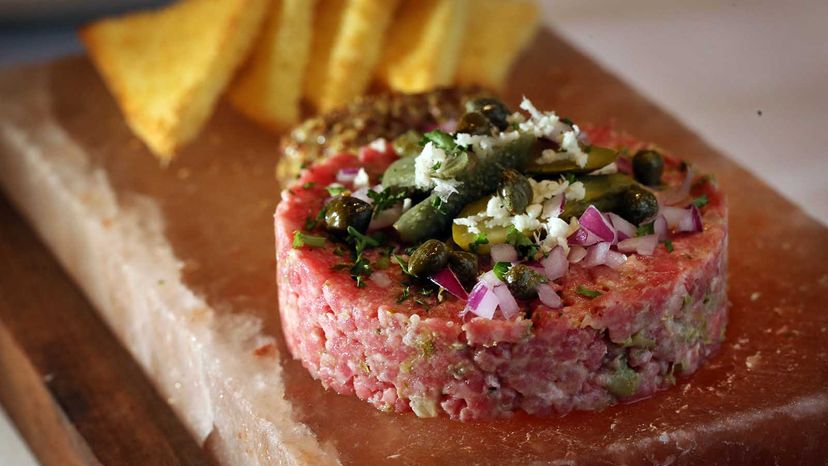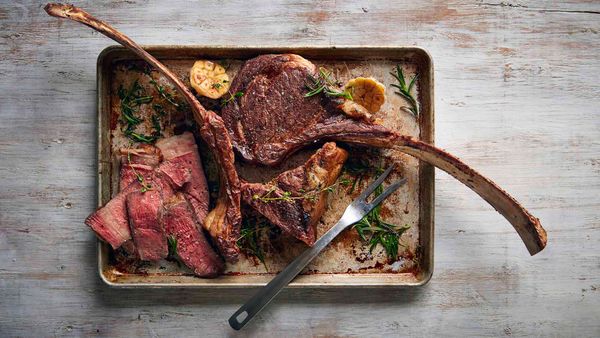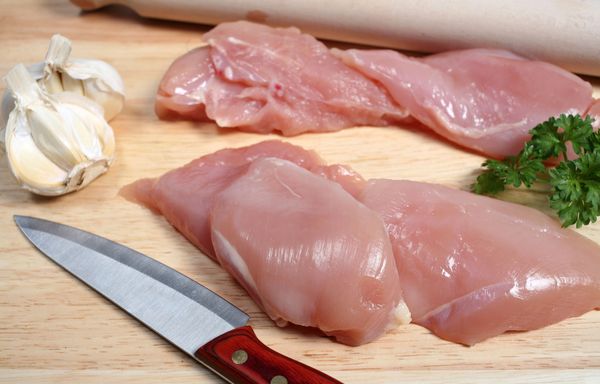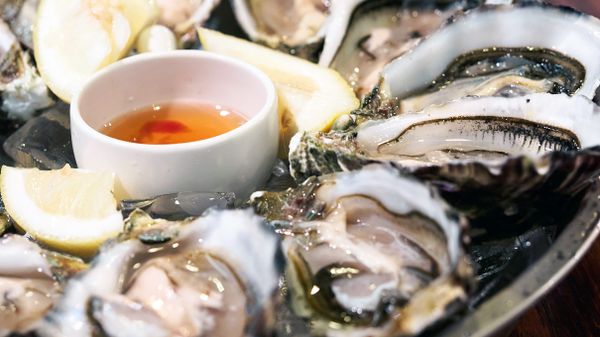"Steak tartare can be made from raw ground (minced) beef or any red meat," says chef Ariane Daguin, CEO of D'Artagnan in Union, New Jersey, and pioneer in the farm-to-table movement. "Bison tartare and venison tartare are very tasty. It is usually served with onions, capers, pepper, Worcestershire sauce and other seasonings — often presented to diners separately — to be added for taste with a raw egg yolk on top of the dish."
Daguin says the type of meat used is typically up to who's making it (tuna tartare is also common), but the best-tasting tartare comes from the tenderloin.
But what about eating raw beef? We all know the risks and how easy it is for bacteria to enter the body, potentially wreaking havoc on the digestive system. So, is eating steak tartare dangerous?
Not necessarily. E. coli is still a very real threat to those who eat raw meat (particularly beef), as the types of harmful bacteria that can cause foodborne illness is killed only when beef is cooked to 160 degrees Fahrenheit (71 degrees Celsius). The USDA warns against eating steak tartare, "cannibal sandwiches" and other uncooked beef due to the risk of foodborne illness.
"The USDA recommends you cook all meat," Daguin says. "However, when basic hygienic rules are followed and fresh meat is used, the risk of bacterial infection is low."
McGill University's Office for Science and Society says if you trust the butcher and restaurant to take the meticulous steps ensure the cut of meat used is stored and prepared properly (single prep area just for tartare, special sanitation methods for knives and cutting boards, and serving immediately), eating steak tartare is perfectly OK.
HowStuffWorks may earn a small commission from affiliate links in this article.



